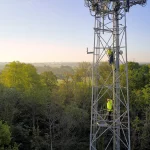South Essex UK Towns to Benefit from New Open Access Full Fibre

The Association of South Essex Local Authorities (ASELA), which is a partnership of seven neighbouring councils, has announced a new project that will aim to build a 10km long stretch of an “open access” full fibre broadband network between the Thurrock and Brentwood areas.
The plan forms part of a partnership with the National Highways’ (they’re providing the funding) Lower Thames Crossing project, will essentially build an extra 10km stretch of gigabit speed fibre to connect with the existing ASELA full fibre network. ASELA has already laid over 200km of full fibre infrastructure between almost 200 public and community sites across the region.
The extension is expected to be used to further improve connectivity to nearby public sector sites and reduce existing connectivity costs, but the network could also be used by commercial fibre carriers – adopting an anchor tenancy approach – to extend their full fibre investment into areas of South Essex that will benefit residents and businesses. But to do the latter would require additional investment from the private sector.
Advertisement
The ASELA digital programme is already said to be stimulating investment from the private sector, currently worth more than £50m, such as by encouraging fibre and broadband ISPs into areas that were previously suffering due to a lack of gigabit connectivity.
As well as linking Brentwood to the wider network, which will benefit local residents and businesses, the investment from National Highways will also provide the infrastructure to deliver an extensive Internet of Things (IoT) network (e.g. traffic and road monitoring, environment monitoring, ditch and gully water level monitoring etc.).
Chris Hossack, ASELA Chair and Leader of Brentwood Council, said:
“Through this partnership between Lower Thames Crossing and South Essex councils we can bring a host of benefits to our residents and businesses. These benefits will help meet both the ambitions we have as councils for the region and the ambitions National Highways has for the Lower Thames Crossing, namely boosting our local and regional economies, improving our infrastructure and bringing better services for everyone.”
The announcement makes no mention of how much this project will cost or how long it will take to complete. But the proposed Lower Thames Crossing is said to be a new road and tunnel under the Thames that will ease capacity on the Dartford Crossing by taking over 13 million vehicles off it each year, which is naturally also a route that the new fibre cables will be able to harness.
Mark is a professional technology writer, IT consultant and computer engineer from Dorset (England), he also founded ISPreview in 1999 and enjoys analysing the latest telecoms and broadband developments. Find me on X (Twitter), Mastodon, Facebook, BlueSky, Threads.net and Linkedin.
« INCA Name Winners of the 2022 UK AltNet Broadband ISP Awards






















































Comments are closed